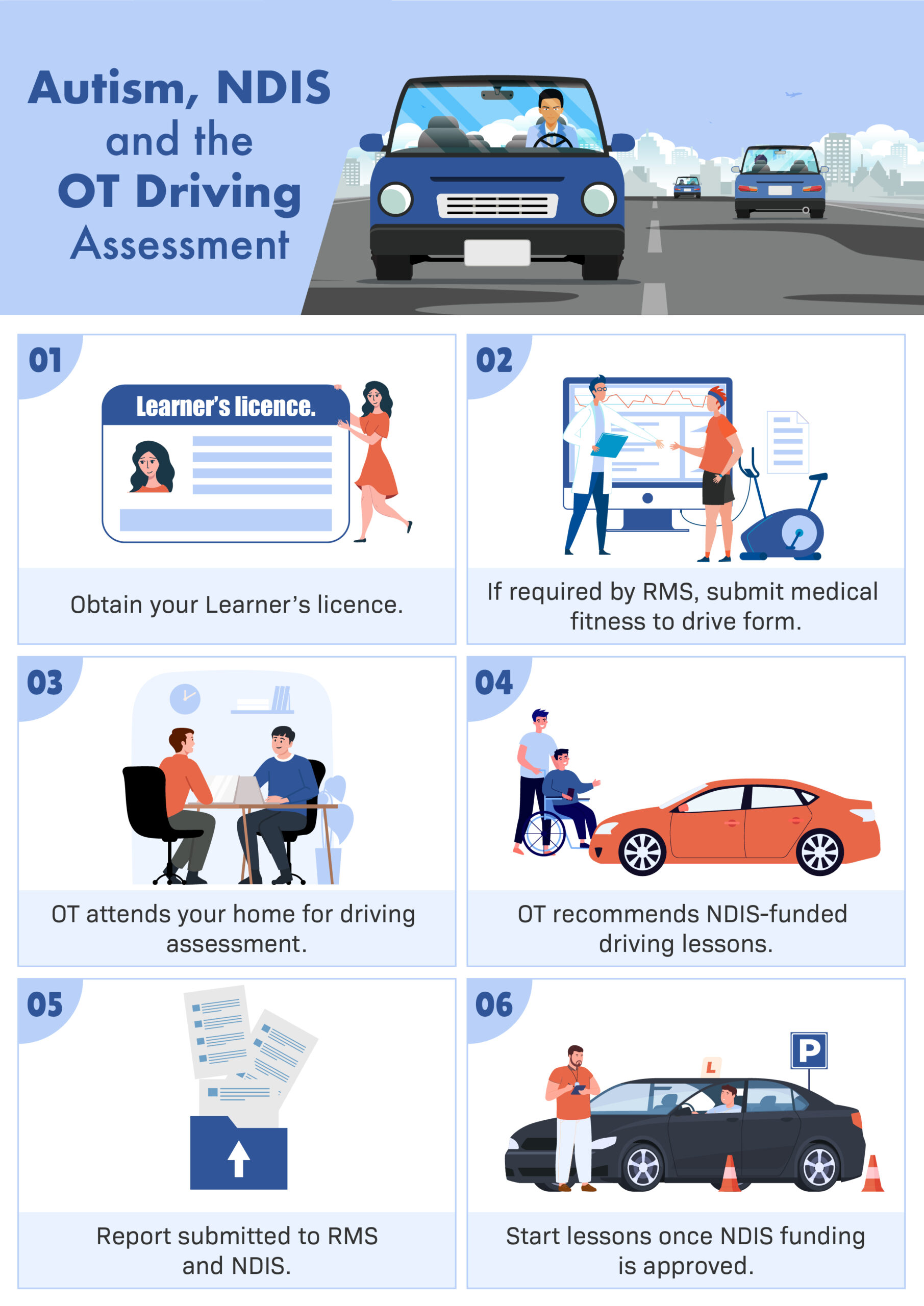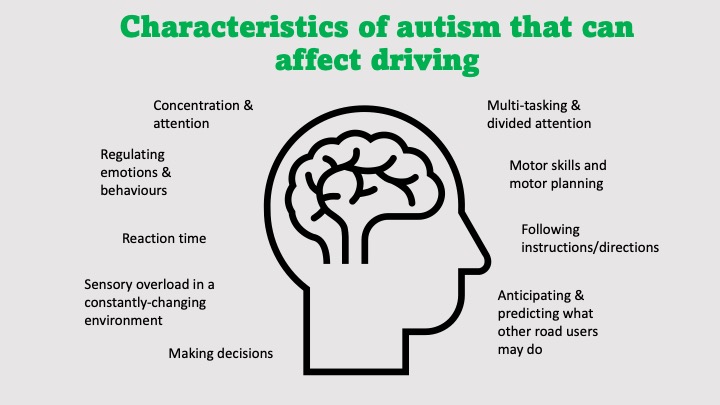Can a person with a diagnosis of autism drive?
Autism (Autism Spectrum Disorder) is a cognitive developmental condition that impacts on how the person observes, interprets and interacts with their surroundings; from their physical environment to people around them. The disorder affects people differently and is often categorised into three levels; level 1 (mild), level 2 (moderate) and level 3 (severe). The level of the condition is usually dependent on how much support and assistance the person needs in everyday life. Autism is a lifelong condition.

A medical diagnosis of autism does not mean that a person cannot drive. However, in Australia, an individual with a medical condition that may impact on their ability to drive is required to declare the condition to the relevant authority. The specific requirements vary from state to state. In NSW, this is usually declared when the person attempts to obtain their learner licence with the RMS. However, sometimes people do not realise that they are obligated to declare their medical condition to the RMS. Therefore, it is not uncommon for the person’s treating doctor, other health professional or family members or friends concerned about the person driving, to inform the RMS of their medical background. In such instances, the person will often be referred to undertake and Occupational Therapy (OT) driving assessment to ascertain how their condition is affecting driving. This article will outline the process involved for a person with autism to achieve their goal of learning to drive.
How can autism affect driving ability?
Autism is a disorder that generally alters how a person processes information from their surroundings. Drivers with autism can regularly have difficulties with the cognitive aspects of driving including perception, spatial awareness, decision-making, following direction, reaction time and sensory modulation problems. They can also have deficits with regulating their emotions and/or behaviours, reduced concentration and decreased divided attention skills. As people with autism may also have accompanying learning difficulties or intellectual disabilities, any cognitive issues may be further exacerbated. Research indicates that people with autism usually take longer than people without the condition to successfully achieve their licence. They are also less likely to obtain their licence than the general population. For example, teenagers with autism learning to drive commonly need more practice and lessons than peers of the same age to pass the P’s test. However, it is important to note that people with autism often earn their licence, so an autism diagnosis does not consequently mean that the person cannot drive.
As is the case for any person who is learning to drive, the initial step is to procure their learner’s driver’s licence. Some people with autism may require additional help to learn the road rules and study for the driver knowledge test. When the aspiring driver attempts to achieve their learner licence, they would ideally declare their autism diagnosis to the RMS. Depending on the severity of the diagnosis and how it affects their general functioning, it may also be worthwhile to discuss their goal of driving with a trusted doctor. The RMS may request some supplementary information regarding the person’s medical history, or ask the doctor to complete the RMS medical fitness to drive form.
What is involved in an OT driving assessment?
Once the person has obtained their learner licence, they can undergo the OT driving assessment. The assessment is split into two parts – the off-road assessment and on-road assessment. Clients with autism frequently require several lessons to become proficient in driving and obtain their provisional licence.
The off-road assessment focuses on analysing the three essential components every driver needs: vision, cognition and physical ability. Any significant deficits in these areas may hinder the person’s driving capacity, and will be explored further in the practical driving test.
The on-road assessment involves the person driving with the OT and a driving instructor. The driving instructor is specially qualified to work with people with medical diagnoses. The client drives for 1 hour, where their capability to drive is assessed in relation to their medical condition. For a person with autism that is only learning to drive, the assessment usually takes the form of a lesson where the fundamentals of driving are taught. Novice drivers with autism usually require ongoing lessons with the rehabilitation driving instructor to build their driving skills, and the OT will develop a lesson plan with specific goals and recommend a specific number of lessons. As long as the person shows continual signs of improvement in their driving ability, lessons will continue until the person is considered ready to take their provisional driving test. However, if the person is observed to stagnate with their driving and does not show ongoing improvement, it may be deemed that ongoing sessions will not be beneficial. This will be discussed with the client and their family, and may result in a cancellation of the person’s licence.
What is the assessment looking at and why is it necessary?
The OT driving assessment is the only systematic process by which a person with a significant and permanent medical condition like autism can be observed during the act of driving. Although a doctor may be concerned about a person’s driving competence, they cannot observe the person driving and thus cannot make the determination if the diagnosis affects their driving. Thus, the role of the OT driving assessment is to comprehensively evaluate how the disorder is affecting their driving ability, if it affects it at all. The assessment and ongoing driving lessons aim to develop the person’s driving skills and help them to reach their driving potential. Minor, non-critical errors that are considered due to the person’s limited driving experience, poor habits or unfamiliarity with the vehicle, are often overlooked in the assessment. However, critical errors (where the driving instructor is required to physically intervene to prevent a collision) are analysed and worked on. If the person shows the aptitude to take on feedback and improve their driving, lessons will continue.
As established, autism is a disorder that influences driving differently for different people. Individuals with milder forms of the condition will often glean a favourable outcome from their driving journey. On the other hand, those with more a more serious level of autism, or those with co-morbid cognitive conditions, will likely find learning to drive a more difficult task. The OT driving assessment is the best way to inspect how a person’s ability to drive is affected by their autism. Moreover, ongoing monitoring by the OT is useful to ascertain if the person is improving with their driving. As the OT observes the person driving, they are in the pole position to decide if they are driving safely





